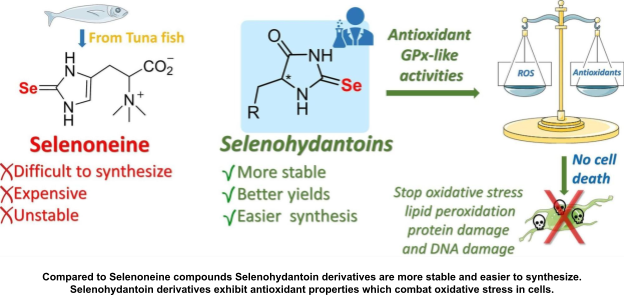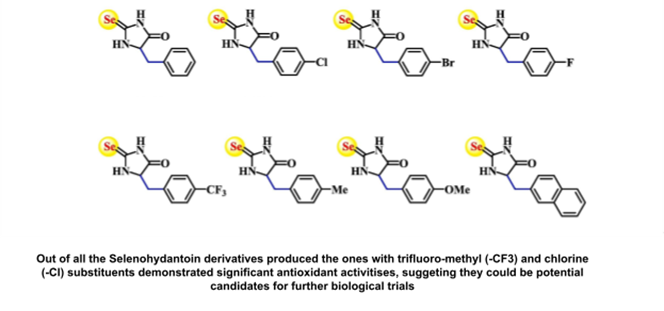Selenium is a vital trace element that plays a crucial role in our health, influencing various biochemical pathways due to its antioxidant properties. In nature, it often finds its way to our plates through foods like tuna, enriching our bodies with its antioxidant prowess.
The intricate relationship between Selenium and antioxidant properties has been extensively studied by researchers in the field, including Dr. Rahman Shah Zaib Saleem from the Department of Chemistry and Chemical Engineering at SBASSE, who is one of the contributors to a paper on Selenium derivatives. The paper was published after Dr. Rahman’s DAAD (Deutscher Akademischer Austauschdienst) scholarship visit to Germany in 2019 in collaboration with eleven international researchers, including Dr Rama Alhasan, Dr. Guilherme M. Martins, Dr. Pedro P. de Castro, Dr. Claus Jacob.

Selenium, acting as an antioxidant powerhouse, takes center stage in this study. Nature carries very few selenium containing organic compounds, Selenoneine being one of those. In this work, the team has worked on the preparation of novel organoselenium compounds. The research zeroes in on Selenohydantoin derivatives, synthetic compounds inspired by Selenoneine. These derivatives, with their fascinating range of pharmacological applications, hold the potential to serve not just as antioxidants but as versatile agents with capabilities spanning anti-inflammatory, anticancer, and antiplatelet realms. Through Selenocysteine enzymes like Glutathione Peroxidase, it acts as a powerful defender, effectively reducing peroxides to explore their potential in combating oxidative stress, a state where an imbalance occurs between the production of free radicals and the body's ability to neutralize them.
Using a unique synthetic method, the researchers synthesized Selenohydantoin molecules, paving the way for a comprehensive evaluation of their antioxidant capabilities. The study employed classical radical scavenging and metal-reducing techniques to unravel the true potential of these synthetic compounds. Cytocompatibility assays demonstrated that the Selenohydantoin derivatives were not only effective antioxidants but also non-toxic to primary human aortic smooth muscle cells. Cytocompatibility refers to the compatibility of a substance with living cells, ensuring that these compounds do not harm or disrupt normal cell function, a promising aspect for further biological evaluations.
Among the synthesized compounds, those adorned with trifluoro-methyl (-CF3) and chlorine (-Cl) substituents emerged as molecules displaying noteworthy antioxidant activities. Dr. Rahman's work highlights these compounds as potential candidates for future biological studies, offering hope for innovative therapies against chronic diseases. This research focuses not only on synthetic compounds but also on the broader context of organoselenium compounds in living organisms. Looking into the future a larger picture emerges - synthesis of Selenium-based compounds could play a crucial role in developing novel and effective prevention and treatments for diseases such as cancer, cardiovascular diseases, cystic fibrosis and rheumatoid arthritis.

Dr. Rahman has recently been honored with another DAAD (Deutscher Akademischer Austauschdienst) scholarship grant by the German Academic Exchange Service. Through the scholarship Dr. Rahman and his research team will delve into the study of various signaling proteins and kinases, with a particular focus on the innovative molecule known as Proteolysis Targeting Chimeras (PROTACs). To learn more about Dr. Saleem's cutting-edge research and the potential impact of PROTACs on cancer treatment, follow this link.